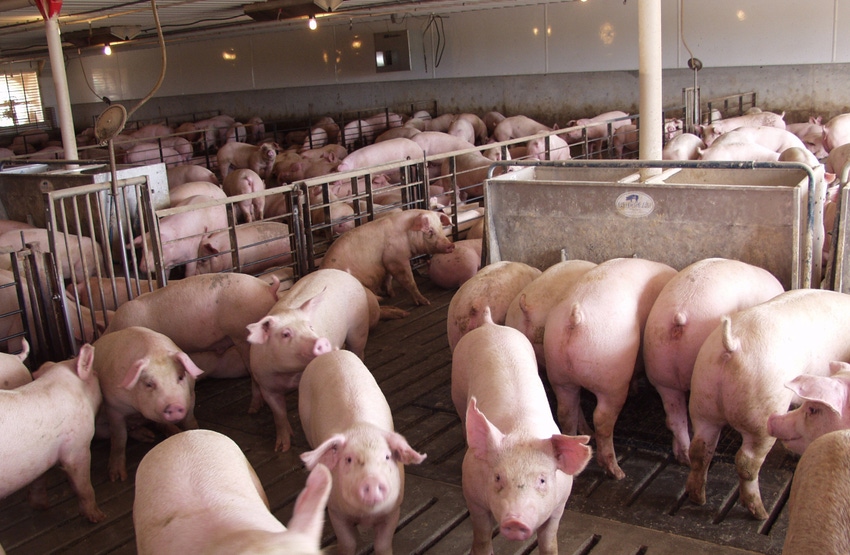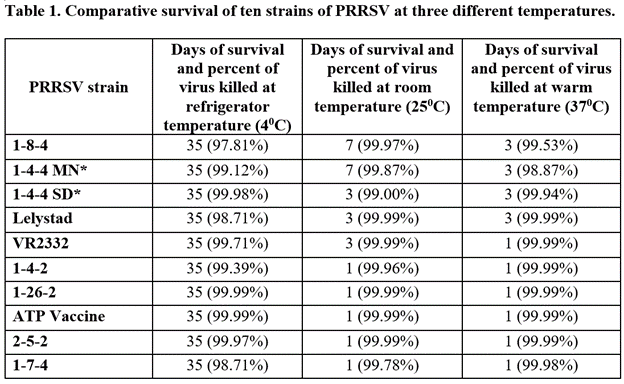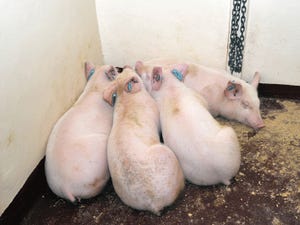Comparative survival of different strains of PRRSV
Study results show differences in survival of PRRSV strains at different temperatures
June 7, 2022

Background: Porcine Reproductive and Respiratory Syndrome virus (PRRSV) is a major cause of economic losses to the North American swine industry. An emerging PRRSV-2 classified as 1-4-4 RFLP pattern-lineage 1C is the cause of a regional outbreak in the Midwestern U.S. since 2020. PRRSV can survive for a long period in the environment depending upon factors such as temperature, moisture, matrix, and pH. The emergence of new PRRSV variants within the last 20 years and the severity of disease outbreaks raise concerns the continued dissemination of this virus. The objective of this study was to compare the survivability of ten different strains of PRRSV at three different temperatures (4°C, ~25°C and 37°C). Nine of the ten strains were PRRSV-2 except the Lelystad strain, which belongs to PRRSV-1. A summary of survivability of various PRRSV strains (and percent virus inactivation) at different temperatures is shown below in Table 1.

*Note: 1-4-4 SD is novel L1C-1-4-4 variant; 1-4-4 MN has not been sequenced, yet.
Summary of results:
Refrigeration temperature: At 4°C, all ten strains of PRRSV survived for at least 35 days. However, six strains (1-7-4, Lelystad, 1-8-4, VR 2332, 1-4-2, and 1-4-4 MN) were more resistant at this temperature than the other four strains.
Room temperature: At 25°C, five strains survived for no longer than 1 day. The other five strains (VR2332, Lelystad, 1-4-4 SD, 1-4-4 MN, and 1-8-4) appeared to be more resistant. They survived for 3 to 7 days at this temperature.
Warm temperature: At higher temperature (37°C), six strains survived for only one day while four of them (Lelystad, 1-4-4 MN, 1-4-4 SD, and 1-8-4) survived for up to 3 days.
Conclusions: The emerging variant 1-4-4 1C was one of the more resistant strains; it survived for 3 days at both room temperature and at 37°C. These results show differences in the survival of PRRSV strains at different temperatures. It is not surprising that the virus survived longer at cold temperature, as compared to room temperature and 37°C. Biosecurity practices that include a robust disinfection protocol of facilities, equipment, and instruments must be followed since contaminated surfaces at different temperatures could be a potential risk factor for virus transmission.
It is importatnt to note that in terms of percentages, the results may look similar. However, they are different when looked at in terms of how many log10 of virus was killed. For example, 99.99% kill means that 4 logs of virus have been killed while 90% kill means only one log kill of virus. In other words, if we start with 1 million viruses and 4 logs are killed, it means that only 100 viruses are surviving. On the other hand, 90% kill means that a one log kill means that from one million viruses, we have managed to kill 900,000 viruses but 100,000 are still viable.
The study was funded in part by the Swine Disease Eradication Center, University of Minnesota.
You May Also Like



